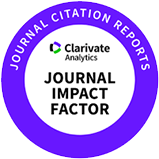Changes in the properties of frozen meat with freezing and storage conditions and non-destructive analyses for monitoring meat quality
Received: Oct 28, 2024 ; Revised: Dec 08, 2024 ; Accepted: Feb 26, 2025
Published Online: Mar 07, 2025
Abstract
Freezing is a valuable technique for extending the shelf-life of meat. However, various changes occur in the physicochemical properties of frozen meat, which are affected by the frozen storage conditions, including the freezing temperature and storage duration. Conventional methods for measuring the properties of frozen meat are destructive and time consuming. Therefore, non-destructive real-time methods have been developed. Non-destructive analyses are divided into spectroscopy- and imaging-based technologies. A combination of non-destructive methods and supervised learning has been used to predict the properties of frozen meat, such as lipid and protein oxidation, which are affected by frozen storage conditions. This review focuses on the changes in meat properties caused by temperature and storage duration in freezing conditions, and the non-destructive measurements used to analyze the properties of frozen meat.













